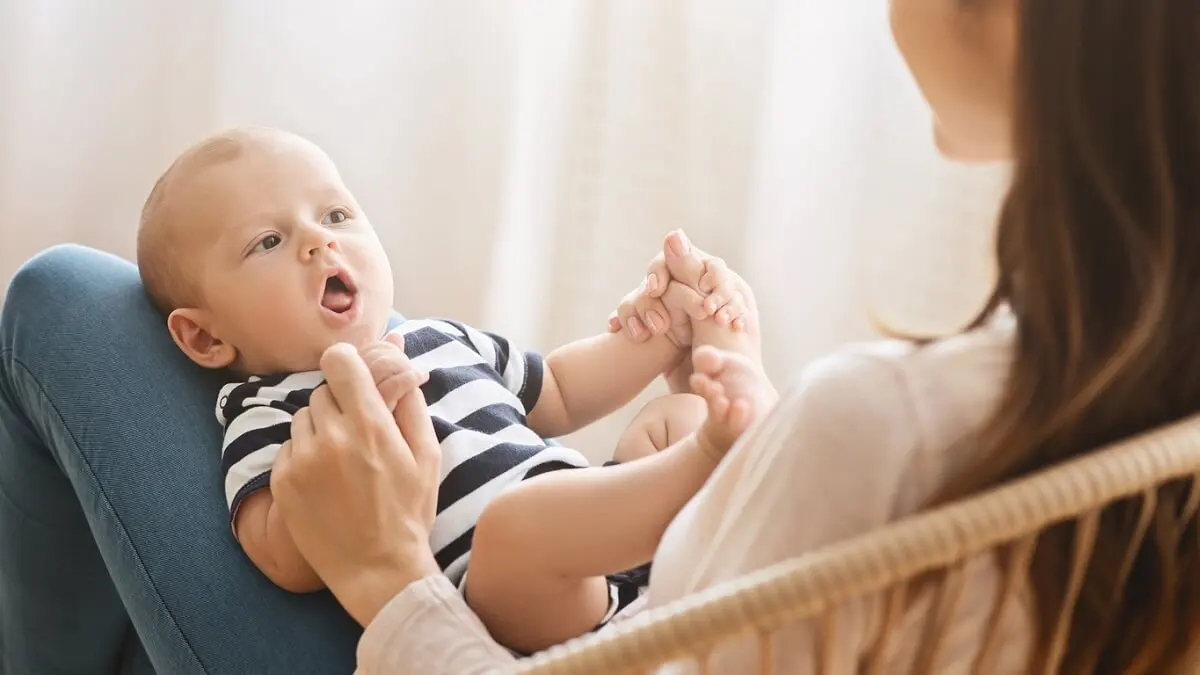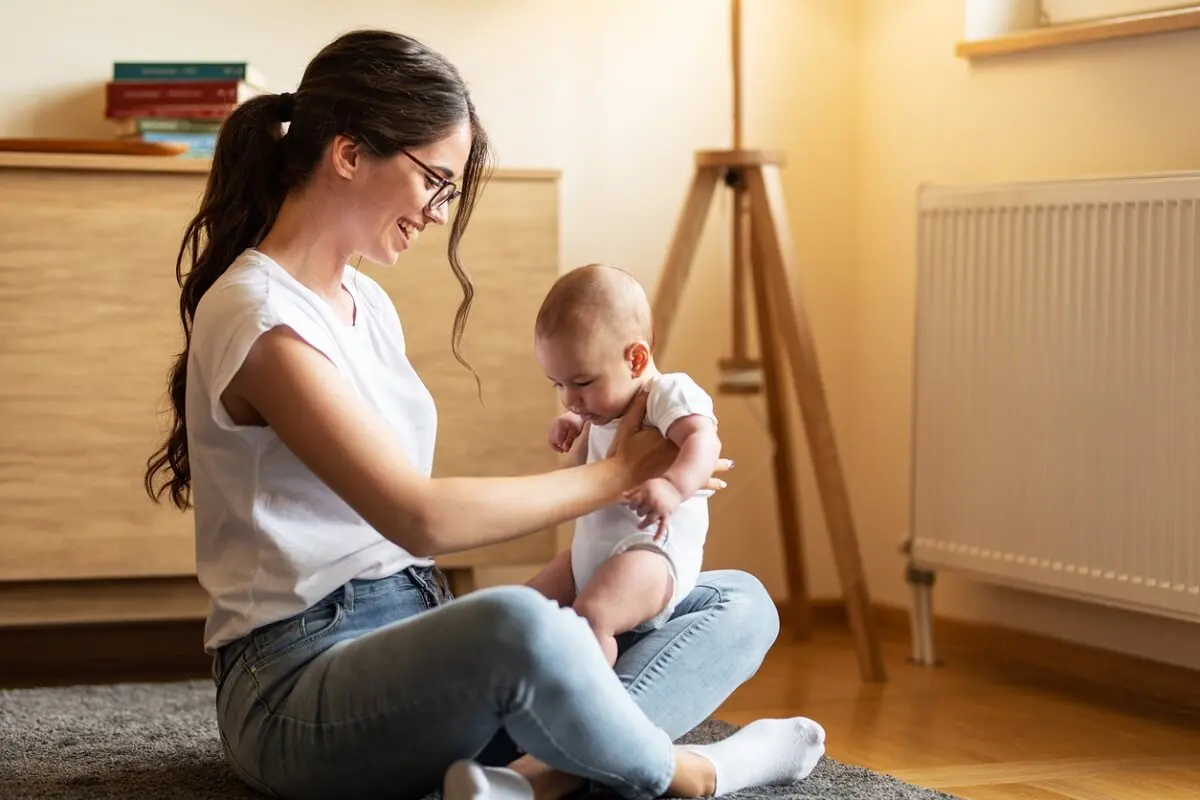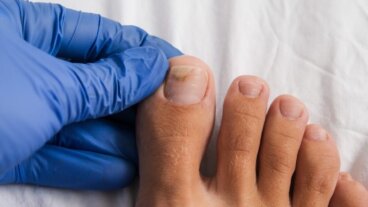How to Help Your Baby Learn How to Sit


Reviewed and approved by the nurse Leidy Mora Molina
Sitting is a baby’s ability to sit up and stay in that position. Developing this skill is not only a great achievement, but also a fundamental milestone for normal development.
It’s usual for a baby to start sitting up at around three months of age. Once she or he notices that they can do it, they often insist on being placed in that position. At the beginning, the baby often doesn’t manage to support his or her body completely, but little by little, he or she always succeeds.
In most cases, a baby completes the sitting position at six months of age. At this age, the baby is able to sit up on his or her own without parental help. A baby can also hold his or her head upright and, if she or he falls and lies down, the baby will be able to return to his or her original position independently.
What is sitting up?
Sitting up is the process by which a baby learns to sit up on his own and maintain this position at will, without needing help. This usually happens gradually, so parents should not rush it, but rather be patient and let it happen on its own.
It’s important to note that each child develops this skill differently. Therefore, although some children complete it at six months, it’s not uncommon for others to complete it at nine months. This is greatly influenced by the stimulation received by the child.
Having said this, it’s not advisable to pressure the child to reach the sitting position: this should occur naturally. Although you can help and encourage him/her, it’s counterproductive to force him/her. Instead, it’s a good idea to pay attention to their posture to prevent possible hip or spinal deviations.
The process begins when the baby learns to lift its own head little by little. This makes the baby’s neck muscles become stronger. The baby can then manage to sit up with the help of an adult, but soon falls down. Gradually, he or shi is able to sit up.

Like this article? You may also like to read: The Importance of Crawling for your Baby’s Development
Signs that a baby is ready to sit up
Sitting up is an important developmental milestone and occurs spontaneously. Therefore, it’s important to watch for signs that your baby is ready to take this important step.
The first thing to keep in mind is that your baby should take the initiative. Of course, she or he will not try to sit up all at once. After your baby gets control of his or her head, it’s normal for the baby to start turning on his or her tummy when he or she is on his back.
The baby will also try to sit up when he or she is in his or her stroller. After this, the baby will try to sit up more and more insistently. It’s best to support the baby with cushions or soft surfaces when he succeeds. This gives the baby more support and security.
How can you help your baby to sit up?
A baby can only sit up when his or her neck and back muscles are strong enough. Parents can help with stimuli that facilitate this process in this muscular strengthening.
There are some recommended actions that should be done carefully and gently. They are the following:
- Lay the baby face down. Do this any time she or he tries to turn over repeatedly. This will help strengthen his or her muscles.
- Floor activities. You can spread out a blanket or rug and put toys nearby. The baby will try to reach for them and thus spin around and strengthen his or her muscles.
- Seated activities. This consists of sitting the baby with cushions or pillows and putting toys nearby. As in the previous case, the baby will try to reach those objects, and this exercise will benefit him or her a lot.
- Sitting on your lap. The baby should be held on his or her back. Then, try to let go for a few seconds. The baby may be able to keep his or her balance, each time for a longer period of time.
The developmental benefits of sitting
Sitting is one of the vital processes for the development of the baby’s spine and posture. It allows the baby to adopt a position against gravity, which is a great achievement.
In addition, it increases the baby’s autonomy and allows him or her to acquire a different perspective of the world around them. Incidentally, it will increase his or her curiosity, and he or she will begin to develop his or her balance skills.
Other benefits of sitting are as follows:
- It provides security and comfort to the baby.
- Sitting increases the baby’s field of vision.
- It facilitates reaching for objects that are close by.
- It improves the8ir breathing.
- With a good posture, sitting helps to prevent bone and muscle alterations.
- It increases the possibilities of socializing.
- Sitting projects a good body image.
- It contributes to increasing their activity and interaction with the environment.
- It favors motor development.

We think you may be interested in reading this, too: Commercial Baby Food May Be Contaminated with Heavy Metals, Report Shows
Some final recommendations
If parents notice that the child doesn’t try to turn around, let alone sit up, it’s a good idea to consult a pediatrician. The same is true when the child is over nine months old and still doesn’t sit up. He or she may need some extra help to achieve this milestone.
In addition, it must be understood that a baby’s development is gradual. For this reason, even when the baby is sitting up, it’s not advisable to keep him or her seated for a long time in devices that limit his or her mobility. It’s very important to make sure that the baby adopts the correct postures.
All cited sources were thoroughly reviewed by our team to ensure their quality, reliability, currency, and validity. The bibliography of this article was considered reliable and of academic or scientific accuracy.
- Rachwani, Jaya et al. “Behavioral flexibility in learning to sit.” Developmental psychobiology vol. 59,8 (2017): 937-948. doi:10.1002/dev.21571
- Kyvelidou A, Stuberg WA, Harbourne RT, Deffeyes JE, Blanke D, Stergiou N. Development of upper body coordination during sitting in typically developing infants. Pediatr Res. 2009;65(5):553-558. doi:10.1203/PDR.0b013e31819d9051
- García, J. L., López, A. M. S., García, L. B., de Cabo, L. F., Benítez, I. V., & Cordero, M. J. A. (2017). Actividad física en el agua para mejorar la psicomotricidad de los bebés sanos. Protocolo del estudio Babyswimming. Journal of Negative and No Positive Results: JONNPR, 2(5), 186-193.
This text is provided for informational purposes only and does not replace consultation with a professional. If in doubt, consult your specialist.








